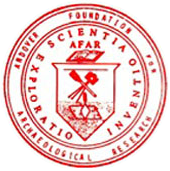Archaeology in the Marquesas
Excavations at the Hanamiai Dune,site of AFAR's ongoing community-based field school. Left to right: Michelle Kim, Emily Lowe, Hio Timau and Emily Donaldson.
Polynesians are descended from Pacific Islanders whose ultimate origins can be traced to Taiwan and the southeast coast of China. Their journey across the Pacific is recognized as the greatest feat of open sea navigation in the history of the ancient world. The Marquesas, one of the most isolated archipelagoes, were discovered and settled by Polynesians 800-1000 years ago. Today they are part of French Polynesia, a French overseas collectivity. The Marquesan landscape is tropical with densely forested valleys backed by high mountains and knife-edge ridges. The islands lack coastal plains, making land travel difficult and until the 1980s there were almost no roads. Eight of the ten islands are inhabited.
Hanamiai Valley, a 20 minute walk from Vaitahu (photographed in 1981).
The Marquesas lie in isolation along the far edge of East Polynesia, 2000 miles south of Hawaii and 900 miles from Tahiti. Not until the arrival of Captain James Cook in 1774 were they opened to the Western world. Marquesans suffered badly from the lethal impact of guns, germs and steel. Their population collapsed from 45,000 inhabitants at the time of European contact to only 3000 in the early 1900s. It has recovered since that time and the current population numbers close to 9000. Tahuata, the home of our indigenous community, has around 700 inhabitants living mostly in Vaitahu, the island’s capital and administrative center.
In Vaitahu and the neighboring valley of Hanamiai, largely intact monumental stone platforms appear throughout the coconut plantations and forests of breadfruit, banana, and mango. These remains represent residential and ceremonial centers of large Classic Period chiefdoms dating to a cultural efflorescence beginning around AD 1600 and extending until the time of Western contact. On the Hanamiai coast, we discovered a sand dune with rich archaeological deposits spanning the Classic Period while also recording Tahuata’s history in its entirety, beginning with arrival of the first Polynesians around AD 1200.
Since 1996 AFAR has collaborated with the Tahuata community to conduct archaeological research at the Hanamiai Dune and other sites. Our long-term collaboration allows local Marquesans to work on archaeological field schools with students from the United States and Europe. Te Ana Peua, our community-based museum, has developed hand in hand with the archaeological research. All of our discoveries remain on Tahuata and Te Ana Peua now houses one of the world’s best collections of Marquesan artifacts
Online Gallery
Recent Excavations at the Hanamiai Dune
"At first I felt that the Oreos we shared at break time were what best represented my relationship with the Marquesans. But as time went on and we dug deeper, hearing tales of James Cook and Pacific trade routes and Catholic missionaries while unearthing the artifacts of that era, I was overcome by my own rather cliché observation of just how small humans have made this great big world of ours. How we have been reaching out to one another across the vast Pacific Ocean for hundreds of years... How we are all connected… It’s something that can be described only feebly on paper, in a book, or in a classroom. It’s something you have to feel, and I am very grateful to AFAR’s field school for giving me the opportunity to do so."
- Grace 2008 field school






















